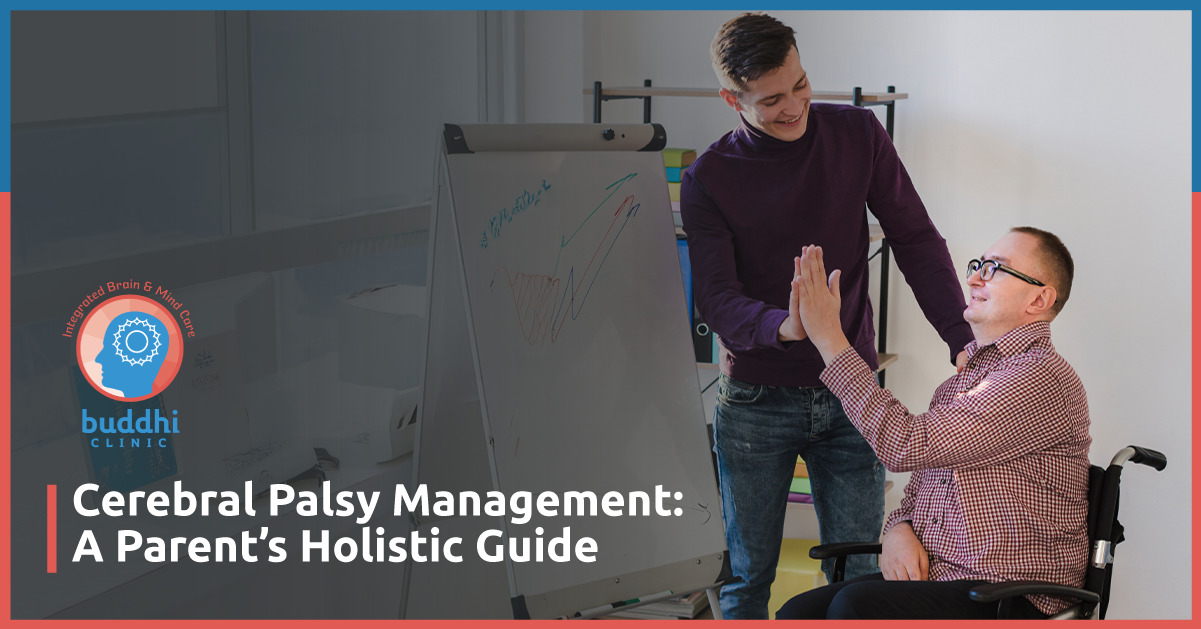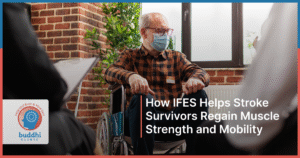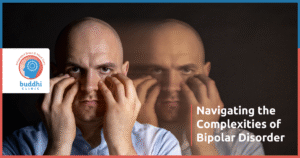Introduction
Parents are often stunned by a diagnosis of cerebral palsy in their child. The condition is motor and muscle-related, with the need for management for a lifetime. However, if managed, CP children are able to lead productive lives. A multidisciplinary management plan involving medical management, therapy, adaptive skills, and emotional support can play a major role in enhancing outcomes.
This blog discusses cerebral palsy, treatment options, and specific treatments provided in Buddhi Clinic.
What is Cerebral Palsy?
Cerebral palsy refers to a condition of the brain resulting from brain damage prior to, during, or shortly following birth. This affects muscle movement, posture, and coordination that results in diverse levels of impairment.
Causes of Cerebral Palsy
- Prenatal causes: Genetic defect, infections, maternal illness.
- Perinatal causes: Insufficient supply of oxygen while giving birth, premature birth.
- Postnatal Factors: Infections of the brain, head trauma, infant stroke.
Types of Cerebral Palsy
- Spastic CP: Muscle stiffening, difficulty in movement.
- Dyskinetic CP: Involuntary movements, alteration in muscle tone.
- Ataxic CP: Impaired balance and coordination.
- Mixed CP: Combination of symptoms of above types.
Early diagnosis and intervention can effectively manage symptoms.
Cerebral Palsy Management: A Parent’s Comprehensive Guide
Cerebral palsy (CP) is a disorder of movement and muscle coordination caused by neurological damage. CP management is a multidisciplinary approach involving physical, psychological, and social aspects of the disease. Parents have a very important role in coordinating medical management, therapy, adaptive strategies, and emotional support to the child for an enhanced quality of life.
1. Medical Treatment & Therapy
Medications and therapy form the basis of cerebral palsy care, which assists children in learning movement skills, communication, and pain management.
Physical Therapy: Gaining Strength and Mobility
Physical therapy enables children with CP to gain muscle strength, flexibility, and mobility.
Physical therapists create customized exercise programs to:
- Strengthen weakened muscles.
- Enhance coordination and balance.
- Reduce muscle stiffness and contractures.
- Improve walking, sitting, or the use of assistive devices.
Early physical therapy increases motor function and prevention of complications involving muscle tightness and joint deformity.
Occupational Therapy: Optimizing Daily Living Skills
Occupational therapy addresses the enhancement of independence via the teaching of necessary daily living skills like:
- Dressing, eating, and grooming.
- Writing and fine motor capabilities.
- Application of adaptive equipment for independence.
- Improvement in hand-eye coordination.
The therapist teaches children to perform daily living skills that enable them to move and do tasks more easily at school and social settings.
Speech Therapy: Enhancing Communication
Speech therapy is required by children with CP who cannot speak, swallow, or communicate using alternative means. Speech therapists assist by:
- Weakening facial muscles to enhance the clarity of speech.
- Teaching sign language or assistive communication devices to children who are non-verbal.
- Facilitating swallowing to enhance eating safety.
Establishing proper communication skills enhances socialization and self-confidence in children with CP.
Medications: Management of Symptoms
Certain medications manage symptoms and enhance comfort for kids with cerebral palsy. They are:
- Muscle relaxants to ease spasticity and stiffness.
- Anti-seizure medications to control epilepsy, a common finding in CP.
- Pain management medication to relieve pain caused by muscle tightening.
The doctor makes proper medication based on the child’s needs and reaction to medication.
Surgical Procedures: Fixing Mobility Issues
In extreme cases, surgery can enhance movement and reduce pain resulting from muscle contractions. Some common surgeries are:
- Orthopedic surgery for correcting bone deformity.
- Selective dorsal rhizotomy (SDR) for reducing spasticity by severing nerve fibers.
- Muscle-lengthening surgeries to reduce stiffness and enhance flexibility.
Surgery is usually the last resort when therapy and medicine are unable to bring relief.
2. Adaptive Strategies & Assistive Devices
Home adaptations and adaptive gear greatly enhance independence, communication, and mobility for CP children.
Mobility Aids: Making Movement Easier
Assistive devices enable children to travel safely and independently, such as:
- Walkers and crutches to support stabilizing.
- Wheelchairs to provide mobility assistance.
- Braces and orthotics to aid posture strengthening.
Each child is unique, and they have different needs for mobility; experts suggest support devices appropriate for their capabilities.
Home Adjustments: Creating a Barrier-Free Environment
Modifications at home increase independence:
- Installing ramps for wheelchair accessibility.
- Utilizing handrails and grab bars in the bathroom.
- Restacking furniture for improved mobility.
Accessible household arrangements allow children to work with greater ease.
Communication Devices: Assisting Non-Speaking Children
Non-verbal children may be helped by the use of augmentative and alternative communication (AAC) devices, including:
- Picture boards to stay non-verbal.
- Speech-generating devices.
- Eye-tracking systems to offer speech.
These tools give children with CP a method of speaking and communicating their needs effectively.
3. Emotional & Social Support
In addition to physical attention, emotional and social support is also essential in controlling cerebral palsy.
Parental Counseling: Supporting Caregivers
Parents experience emotional difficulties in taking care of a child with CP. Counseling and support groups offer:
- Emotional support.
- Stress management as parents.
- Support network of other parents dealing with similar challenges.
Gaining coping strategies helps families learn to build healthy family life.
Inclusive Education: Learning Program Adaptations
Learning is an integral part of the child’s life. Adapted special education programs according to CP needs allow children to:
- Enjoy customized learning plans.
- Classroom adjustments.
- Support of therapists and teachers.
Inclusive education enables children to achieve educational potential along with the support they require.
Community Involvement: Fostering Social Interaction
Social activities promote self-confidence and emotional well-being. Enabling children with CP to engage in:
- Adapted sports for disability.
- Creative arts, music, and recreational activities.
- Peer interaction and group work.
Empowerment of feeling part of a community enables self-esteem and overall happiness of CP children.
Creation of a sense of belonging enhances self-esteem and overall well-being in CP children.
Treatment for Cerebral Palsy at Buddhi Clinic
Buddhi Clinic offers distinctive, all-inclusive treatment of cerebral palsy by integrating contemporary medical methods with the latest rehabilitation procedures. Their treatment plan consists of:
- Multimodal Therapy: Physiotherapy, occupational therapy, and speech therapy to improve functional skills throughout the day.
- Neurorehabilitation: Brain stimulation methods to improve control over movement.
- Pain Relief: Medication and therapy for spastic pain relief.
- Caregiver Education: Parent training in management of CP challenges in home.
Conclusion
Treatments of cerebral palsy are done through medical treatment, therapy, adaptive practices, and psychosocial support. Parents will need to take care that their child is being provided with the optimum care. With some treatments such as Buddhi Clinic’s, children with CP can learn skills for increased independence and to improve the quality of life.
FAQs
1. Is cerebral palsy curable?
No, but early therapy and medical treatment can significantly enhance mobility and independence.
2. What therapies are helpful for children with CP?
Physical, occupational, and speech therapy are all required for cerebral palsy management.
3. How can parents support a child with CP at home?
Emotional support, therapy participation, and home adjustments assist.
4. What are assistive devices that aid children with CP?
Walkers, wheelchairs, braces, and communication devices enable mobility and interaction.
5. What treatment does Buddhi Clinic provide for cerebral palsy?
Buddhi Clinic provides multimodal therapy, neurorehabilitation, and personalized care based on individual children’s requirements.





